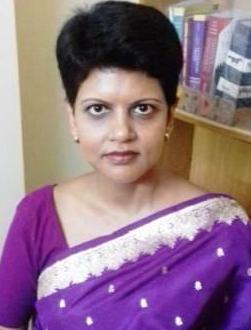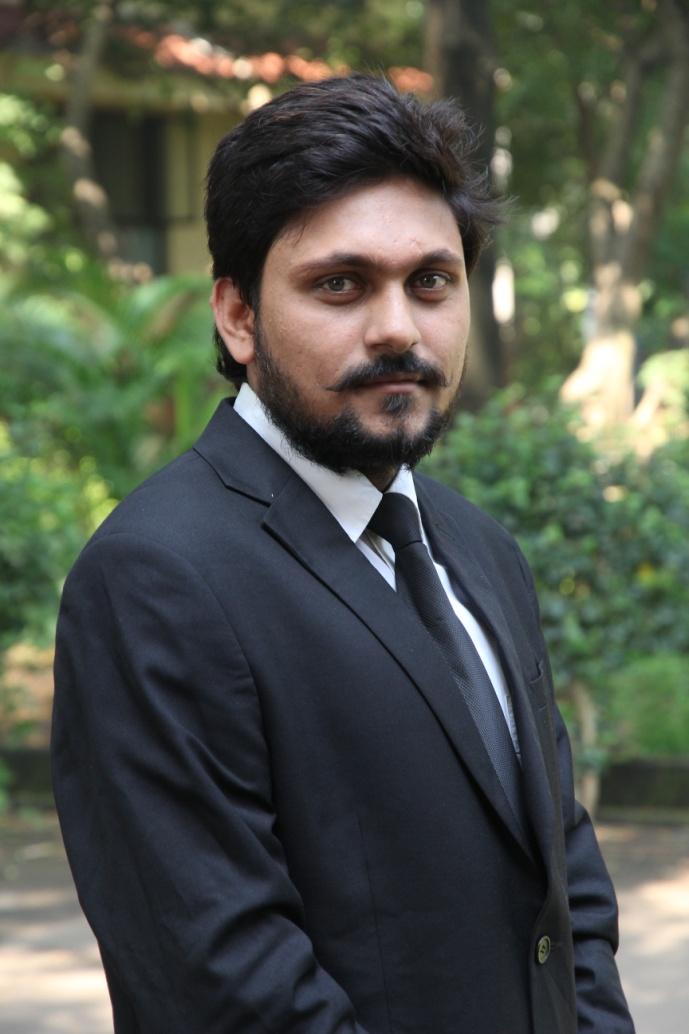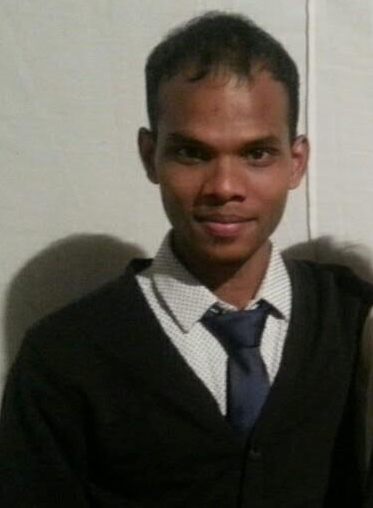Dr Anuradha Bele
 In terms of population, Vietnam with nearly 10 crore people compares well with Maharashtra (about 11-12 crore). However, in terms of handling of Covid-19, as of 9th May 2021, Vietnam has reported 4212 cases and total 37 deaths. In Maharashtra, the total cases now stand at 53,78,452 (53 lakhs) while the death toll is 81,486.
In terms of population, Vietnam with nearly 10 crore people compares well with Maharashtra (about 11-12 crore). However, in terms of handling of Covid-19, as of 9th May 2021, Vietnam has reported 4212 cases and total 37 deaths. In Maharashtra, the total cases now stand at 53,78,452 (53 lakhs) while the death toll is 81,486.
Low-Cost Model of Vietnam
Vietnam has prioritised health of its citizens over economic concerns. It has focussed on prevention first. With large scale deployment of the armed forces, as well as common citizens by giving this a nationalistic flavour, Covid-19 crisis has been smartly used by its government to encourage solidarity and collective action.
The health infrastructure of Vietnam is similar in structure to ours, with four levels of health clinics – central, provincial, district, commune/village level. The national policy in Vietnam has focussed on capacity building of grassroots-level health care services and citizens are encouraged to seek health care services at locally provided primary health care facilities, ensuring no overloading of secondary- and tertiary-level hospitals.[1]
The ratio of physicians to people is one of the lowest in South East Asia at 8 per 10,000.[2]So when the first Covid-19 patient was reported on January 23, 2020, the country knew that it did not have the capacity to handle a widespread pandemic. So Vietnam applied values of the collective well-being of the community, rather than that of individuals, and deployed a model which ensured lower costs to both the citizen and the country to win over the pandemic. They quickly mobilised their tax-funded healthcare system, and scientific data, and concrete analysis of the material conditions present. And a materialist review of previous infectious disease responses to SARS and H1N1 proved useful in their decision making. Vietnam did not rely heavily on expensive measures such as mass testing. Instead, their low-cost model approach is comprised of the following: (1) rapid closure of borders; (2) strict implementation of quarantine protocols on foreign arrivals esp. 14-day quarantine by using existing facilities as far as possible; (3) aggressive track-and-trace and isolation till fifth level (F5 or third degree of contact) and extensive testing of that population only; (4) nation-wide social distancing and mandatory face mask wearing; and (5) systematic application of technology in tracking virus carriers.[3]
In this model, once a patient with COVID-19 is identified (F0), local public health officials, with support from health professionals, security officers, the military, and other civil servants, work with the patient to identify who they might have been in contact with and infected in the past 14 days. All close contacts (F1), defined as people who have been within approximately 6 feet (2 meters) of the patient or have had prolonged contact of 30 or more minutes with a confirmed COVID-19 case, are identified by this process and tested for the virus. If F1s test positive for the virus, they are placed in isolation at a hospital—all COVID-19 patients are hospitalized at no cost in Vietnam, regardless of symptoms. This process is carried till F5 level.[4]
From January 23 to May 1, over 200,000 people spent time in a quarantine facility. Most of these are government run quarantine centers and people here are provided with three meals a day, sleeping facilities, and basic toiletries. Though not popular, “On-demand” quarantine facilities were also established in selected hotels for those who are willing to pay. Vietnam implemented mass quarantines in suspected hot spots based on evolving epidemiological evidence over time, irrespective of numbers. It entered into a nationwide lockdown on April 1. Initially, the lockdown was set for 15 days, but it was extended to 21 days in 28 out of 63 provinces. Even before the first cases in Vietnam were confirmed, Vietnam took the first of many steps to implement border closures and limit mobility for citizens and international travellers.
Inbound passengers from Wuhan, China, received additional screening before Vietnam’s first case. Visas for Chinese tourists were stopped beginning on January 30. On January 31,2020—and with only five confirmed in-country cases—the government mandated that all schools nationwide remain closed. Flights to and from China were suspended on February 1 and trains were cancelled. These restrictions were implemented when cases were in the single digits. Flights from the Schengen countries and the United Kingdom were suspended on March 15, and all visa issuance was discontinued on March 18. Vietnam closed borders and suspended all international flights by March 22, 2020. In early February, Vietnam began its practice of placing international arrivals from COVID-19 affected countries in large government-run quarantine centers for 14 days.
Following this method, within three months, Vietnam could begin to lift its national lockdown on April 22, 2020. Schools opened between May 4 and May 11. Public transportation, domestic flights, and taxis are allowed to operate, but international flights remain grounded. Since April 16, Vietnam recorded no new cases of COVID-19 related to community spread.
Along with doctors and nurses, the highly disciplined and trained military officers worked in the frontline. Military barracks have been converted into quarantine centres. Army barracks and military schools in the country served as quarantine facilities with capacity of up to 30,000 people and have been effective in keeping the spread in check. All military units nationwide have actively participated in the fight against the disease. Their science universities and especially their Military Medical University has actively worked with the government and the private sector to come up with low cost testing kits, which they are also currently exporting to the world. [5][6][7][8][9]
While leaders in many countries downplayed the threat of COVID-19, the Vietnamese government communicated in clear terms about the dangers of the illness even before the first case was reported. The artists across the country have used this opportunity to build solidarity and to treat the fight against the virus as a patriotic act. The government has also commissioned the arts industry to produce public service announcements via songs and videos, which, alongside promoting personal hygiene and social distancing, read like war songs. “The virus-invader, don’t expect to rampage; When enemies invade our homes, women will also fight.” Slogans on some of these posters read, “To love your country is to stay home.” Because of this, many young Vietnamese have independently volunteered to help at COVID-19 posts, hospitals, and quarantine camps. [10]
This low cost model has also proven to be cost effective for this developing country. The government estimated the budgetary cost of fighting the pandemic at about 0.2 percent of GDP, with about 60 percent spent on equipment, and the rest on containment activities.[11] So we can see the importance of crafting a persistent and coherent narrative, understanding one’s past to shape the present, and using all means available to foster a sense of unity and more importantly, social cohesion to fight the pandemic.
High Cost Model of Maharashtra
Maharashtra is the richest state in India in terms of its GDP. If we disregard Mumbai and Pune, Maharashtra may not rank among the rich states of India. Though agriculture contributes 25% to its GDP, 51% of labour force is occupied in it, so the majority of the work force is rural. The average monthly income of rural households was Rs. 8,938 out of which Rs. 2,117 was saved for future.[12]
India has 4.8 doctor per 10,000 people and this number is expected to plummet to less than one per 10,000 by 2030.[13] In Maharashtra, according to 2015 report by the health ministry, one doctor serves 27,790 patients, and only Bihar has a worse ratio than Maharashtra.[14] Though Maharashtra is the richest state in India, it has been worst hit by the Covid-19 pandemic. 53,78,452 (53 lakh +) are infected while the death toll is 81,486. There are 4,68,109( 4 lakh +) active cases in the state at present, while as many as 48,26,371 people have recovered from the disease.
Maharashtra has a three-tier health infrastructure. The primary tier comprises of Sub-centres, Primary Health Centres (PHC) and Community Health Centres (CHC). The sub-district hospitals and district hospitals constitute secondary tier whereas, medical colleges and super-speciality hospitals located in major cities are at the tertiary level.
The first Covid-19 case in Maharashtra was reported on 9th March 2020 in Pune. The World Health Organization on March 11, 2020, declared the novel coronavirus (COVID-19) outbreak a global pandemic. The government however, took a high-cost approach to dealing with the situation. There was (1) Non closure of borders; (2) Lax implementation of quarantine protocols on foreign arrivals; (3) Poor track-and-trace and isolation; (4) Hardly any nation-wide social distancing and mandatory face mask wearing.
There were half-hearted attempts to close international air traffic and even by mid-March last year, Mumbai airport was handling 18,000 international passengers per day. [15] The international passengers were required to undergo 7-day compulsory quarantine, not 14-days. They paid for the quarantine facilities themselves. The RT-PCR test was done on Day 5 or 7 in the quarantine facility only. Travellers could seek exemption from institutional quarantine by submitting a negative RT-PCR test report on arrival if the test was conducted within 96 hours prior to undertaking the journey.[16] Aggressive track and trace was not carried out, and this also contributed to fast spread of the virus. There were many instances of passengers breaking quarantine and the police tried to track their movement using an app. By focussing on testing, instead of track and trace and testing in those localities aggressively, the testing was left to the discretion of each citizen and thus, cost to the citizen was increased. The RT-PCR test cost Rs 4,500 earlier and was later cut to Rs 2,800. The PPE kit price was not included in the hospital rates like in Tamil Nadu or Karnataka for instance. Though private hospitals adhered to a fixed rate not exceeding Rs 10,000 per day, a VIP suite could cost Rs 1 lakh or more depending on the hospital and the individual’s choice of room, etc. Treatment in a general ward cost almost Rs 11,000 a day and in an ICU, it will cost approximately Rs 50,000. If Covid-19 treatment takes 15 days, this adds up to almost an exorbitant Rs 7,50,000 per person in a super specialty hospital.[17]
Vaccination is prevention and not a cure. As per the data released by the health ministry, Maharashtra, as of 7 am on May 9, inoculated 1,78,58,864 people ( over 1 crore ). The state has administered the second dose of vaccine to 33,16,183 people , i.e. 0.03% of the population. [18] 70% of its population is below 45 years and the vaccination for this age group has been suspended due to paucity. This age group also needs to pay Rs. 700 to Rs.1000/- per dose. Since the Centre failed to provide vaccines for all the above 45+ age group, the vaccines for the below 45 age group are now diverted to them.
Interestingly, India’s military spending continues and in fact, grew by 6.8 percent to $71.1 billion in 2019. This was the highest military spending in South Asia, and third in the world. In the 2021-2022 defence budget, the pension bill was Rs 1.15 lakh crore out of the total Rs 4.78 lakh crore outlays. India allocates world’s highest i.e. 59 per centof its defence budget to salaries and pensions[19] yet we refused to involve this highly disciplined work force in relief measures for Covid-19. Maharashtra has been called as the place for ‘Military Tourism’. There are many air force and military bases. A few examples are Artillery Center at Deolali (near Nasik), the Armoured Corps center at Ahmednagar, the National Defence Academy at Khadakvasla, airfields at Ozhar, Lohegaon, Santacruz, Sambre (Belgaum), Nagpur etc. Today Maharastra houses a major Air Force base at Lohegaon, and a Naval air base at Mumbai.[20] But no quarantine facilities were set up here and new jumbo facilities had to be built.
This state of crisis was exacerbated by complete lack of empathy by the so-called Bollywood influencers, film stars and artists, and most were seen fleeing the country. Also, there were insipid slogans which further disempowered the common citizen, like” My family, My responsibility” which emasculated the less-equal citizens, and an opportunity to empower the citizens to take responsibility to protect each countryman/woman/child, was lost.
Every crisis, like this current pandemic, is an opportunity to build unity across the deeply caste and class-ridden Indian society and to construct a narrative of social responsibility and social coherence. With the third-wave expected in the near-future, it is not too late to start the process of fostering equality and fraternity amongst the citizens of our state.
~
References
1. Health Care System in Vietnam: Current Situation and Challenges https://www.researchgate.net/publication/269748204_Health_Care_System_in_Vietnam_Current_Situation_and_Challenges#:~:text=Abstract%20Vietnam%20health%20care%20system%20comprises%20by%20four,sector%20widely%20coverage%20from%20central%20to%20grassroots%20levels.
2. A review of Vietnam’s healthcare reform through the Direction of Healthcare Activities (DOHA)https://www.ncbi.nlm.nih.gov/pmc/articles/PMC5664805/
3. Vietnam’s success story against COVID-19https://www.ncbi.nlm.nih.gov/pmc/articles/PMC8103712/
4. Emerging COVID-19 Success Story: Vietnam’s Commitment to Containmenthttps://ourworldindata.org/covid-exemplar-vietnam-2020
5. Army facilities capable of accommodating 30,000 people in quarantine: Deputy health minister (vietnamnet.vn)
6. Army maps out scenarios to fight COVID-19 outbreak at five levels – Society – Vietnam News | Politics, Business, Economy, Society, Life, Sports – VietNam News
7. Army facilities capable of accommodating 30,000 people in quarantine: Deputy health minister (vietnamnet.vn)
8. Army maps out scenarios to fight COVID-19 outbreak at five levels – Society – Vietnam News | Politics, Business, Economy, Society, Life, Sports – VietNam News
9. 20 countries, territories order Covid-19 test kits made in Vietnam – VnExpress International
10. https://www.theguardian.com/global-development/2020/apr/09/in-a-war-we-draw-vietnams-artists-join-fight-against-covid-19
11. https://www.imf.org/en/News/Articles/2020/06/29/na062920-vietnams-success-in-containing-covid19-offers-roadmap-for-other-developing-countries
12. https://indianexpress.com/article/india/monthly-income-rural-maharashtra-higher-than-national-average-survey-5334605/
13. Aggregate availability of doctors in India: 2014-2030 – PubMed (nih.gov)
14. Seven doctors per 1000 people; Maharashtra, Bihar shares worst doctor-patient ratios (livemint.com)
15. https://www.hindustantimes.com/cities/mumbai-news/covid19-effect-passenger-traffic-at-mumbai-airport-dipped-by-73-last-year-101614142546255.html
16. https://www.livemint.com/news/india/state-quarantine-not-mandatory-for-flyers-with-negative-report-11596417868504.html
17. How costly coronavirus treatment in a private hospital will be for common man – India News (indiatoday.in)
18. COVID-19: Maharashtra vaccination tally crosses 1.78 crore on May 9 (freepressjournal.in)
19. https://economictimes.indiatimes.com/news/defence/india-third-largest-military-spender-after-the-us-and-china/articleshow/82269944.cms
20. http://www.warbirds.in/maharashtra.html
~~~
Dr Anuradha Bele is an electronics engineer and a veterinary doctor with a degree in management. She can be reached for references at anuradha.bele@gmail.com









